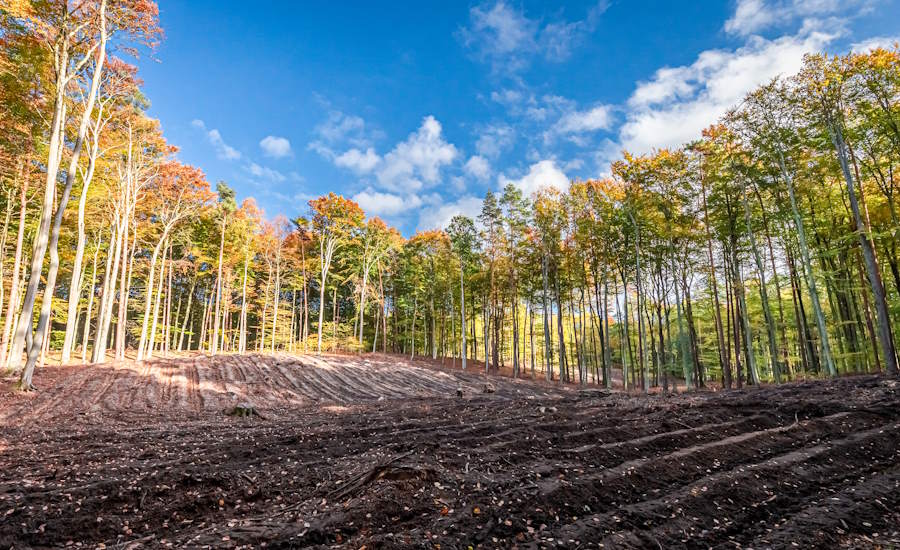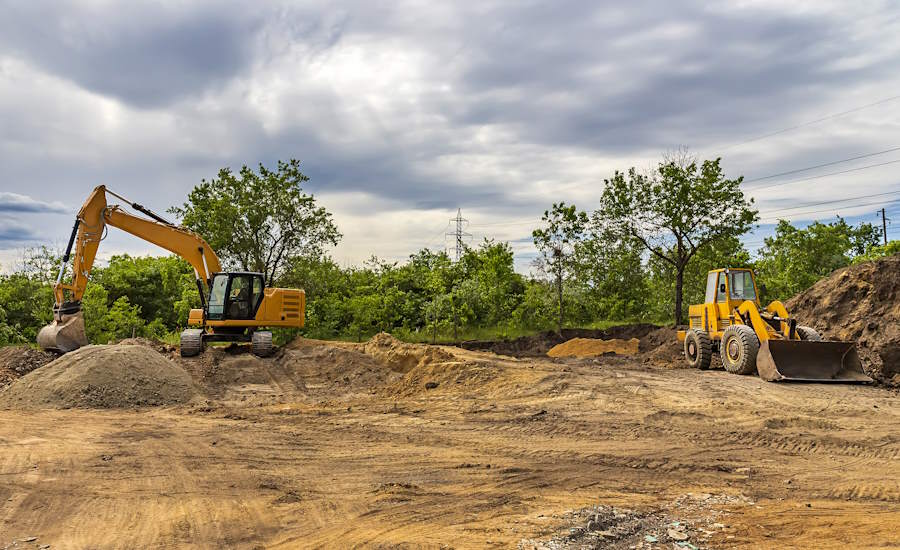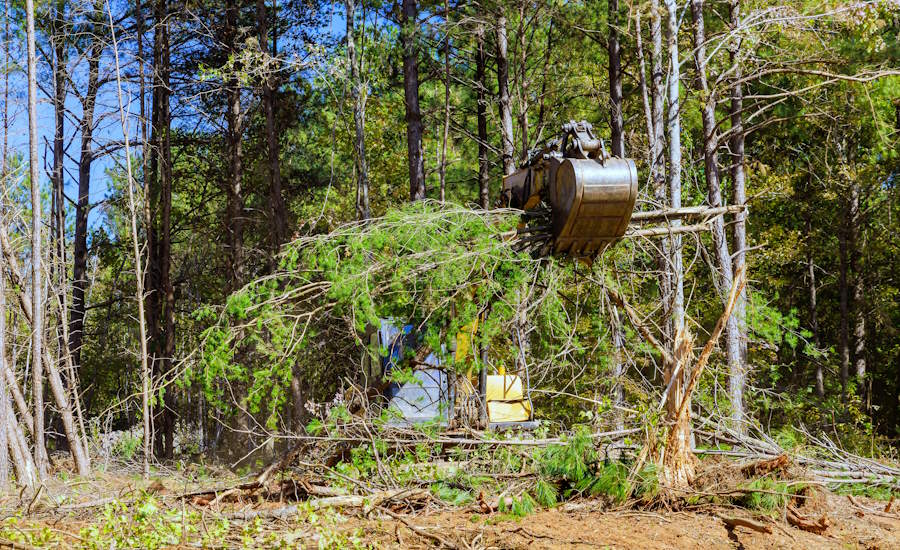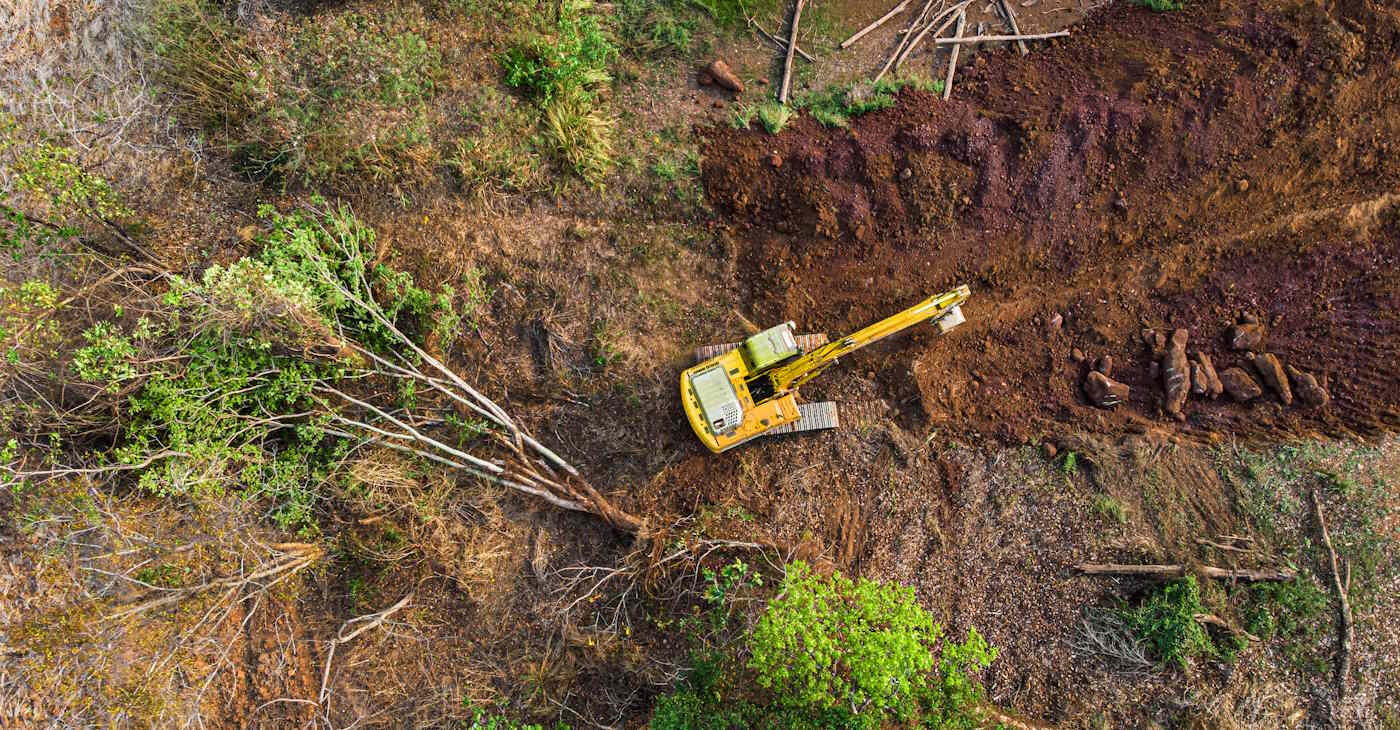Somewhere between 40 and 50 billion metric tons of material are excavated and moved globally each year(!), according to various estimates from international organizations, such as the United Nations Environment Programme (UNEP) and the Food and Agriculture Organization (FAO). This figure comprises everything from large-scale infrastructure projects that dig into mountainsides to smaller, localized endeavors that clear land for agriculture, urban expansion, industrial construction, and more. Although precise data can fluctuate based on the methodologies used, there is little doubt that modern society depends heavily on land clearing and excavation activities to support its growing population, resource demands, and technological needs.
Despite their ubiquity, excavation and land clearing are complex processes that involve far more than just stripping away vegetation or digging a hole in the ground. Both activities demand expertise in surveying, soil science, engineering, and environmental management. At their best, these operations provide essential space for food production, housing, and infrastructure, fueling economic development and technological progress. At their worst, these same operations can wreak havoc on ecosystems, endanger workers, and accelerate climate change. Continue reading down below for a better understanding of this subject.
What’s the meaning of excavation and land clearing?
In the most straightforward sense, land clearing is the process of removing existing vegetation, such as trees, shrubs, and undergrowth, from an area of land. It often involves cutting down or uprooting plant life, removing stumps, and disposing of the resulting debris. Once cleared, the land can be repurposed for agriculture, construction, or infrastructure development.
Excavation, by contrast, deals with the movement and removal of soil, rock, and other subsurface materials. Excavation may occur after the land has been cleared of vegetation, though it can also happen in areas that are only partially cleared—particularly in large-scale mining and tunneling projects. Excavation includes digging foundations for buildings, trenches for pipelines, and massive pits for resource extraction.
Both land clearing and excavation require technical knowledge and the ability to assess soil stability, hydrology, and environmental regulations. Civil engineers, geotechnical experts, and specialized equipment operators frequently collaborate on these projects to ensure safety, efficiency, and compliance with local and international standards.
Located in Sweden and need help with foundation laying, excavation, asphalting and transport? Then you should reach out to LIP AB at www.lipab.se, for your next professional partner within these tasks!

Why is the land cleared?
Land is cleared for a variety of reasons, all driven by socioeconomic and infrastructural demands. Historically, one of the most common motives has been agriculture: removing forests or scrubland to create arable fields for crops and pasture for livestock. As global populations have grown, especially over the past century, the demand for agricultural land has surged, intensifying the rate of clearing in many parts of the world.
However, agriculture is not the only driver. Rapid urbanization requires clear land for housing developments, road networks, and industrial complexes. Infrastructure projects like highways, railways, and airports also necessitate removing existing vegetation and reshaping the terrain to meet engineering specifications. In mining and resource extraction, clearing is often the first stage before commencing excavation operations that extract minerals, ores, or hydrocarbons. Additionally, specialized construction projects, such as those involving renewable energy installations (e.g., solar farms, wind farms), may require vast tracts of cleared land to optimize power generation.
An area of cleared land – what is it called?
In everyday language, an area of land that has been cleared of its vegetation is often referred to simply as a “clearing.” In agriculture, cleared fields intended for crop production might be labeled as arable land or tillage land. In some contexts, especially in forestry or environmental management, cleared areas can also be termed “cut blocks” or “harvested sites,” particularly when referencing timber removal operations. The specific terminology can vary from region to region, but the concept remains the same: these are tracts of land where the original vegetation has been removed to facilitate new uses.
What has most land been cleared For?
According to studies by organizations like the FAO, the majority of land clearing historically has been driven by agricultural expansion, especially for crop cultivation and pastureland. The rise of global food demands throughout the 20th and 21st centuries has spurred large-scale deforestation in regions such as the Amazon Basin, parts of Southeast Asia, and various African nations. Forests and savannas have been replaced with monoculture plantations—often for cash crops like soybeans, oil palm, or cattle ranching.
Secondary but still significant uses of cleared land include urban expansion, industrial development, and transportation infrastructure. While these are vital to economic growth, they often compete with agriculture for suitable terrain, resulting in land shortages in some areas and pushing new developments into ecologically sensitive zones.

The best machines for the task?
Selecting the optimal machinery for land clearing really depends on the project’s scope, the type of vegetation, the terrain’s slope and stability, and regulatory constraints related to emissions, noise, or environmental impact. Commonly used machines for land clearing includes the following though:
Bulldozers
Equipped with large front blades to push, remove, and level soil and vegetation.
Excavators
Versatile in function, with attachments such as buckets, rakes, or grapples that can handle root systems, stumps, and debris.
Skid-Steer Loaders
Useful for smaller projects or tight spaces. They can maneuver around obstacles and deploy various attachments.
Forestry mulchers
Specialized equipment that grinds vegetation and small trees on-site, minimizing waste and the need for disposal.
Once the land is cleared, excavation machines—such as hydraulic excavators, backhoes, or trenchers—come into play for deeper earthmoving tasks. In large-scale projects, operations often rely on fleets of advanced vehicles equipped with GPS-guided systems and telematics. These technologies help manage efficiency, reduce fuel consumption, and minimize overall environmental impact through more precise movements and reduced idle times.
Don’t miss out! In our upcoming article we’ll discuss about the topic of “screening buckets” and their many advantages on the job site, or should we say construction site.

The various risks of clearing and excavation
Any land clearing and excavation operation carries certain risks. From an environmental standpoint, removing large areas of vegetation can disrupt local ecosystems, reduce biodiversity, and contribute to soil erosion. With fewer plants to anchor the soil and absorb rainfall, erosion rates can spike dramatically. Sediment that washes into rivers or wetlands can harm aquatic habitats, while unstable slopes increase the likelihood of landslides.
From a workplace safety perspective, operating heavy machinery, handling debris, and working on uneven terrain elevates the risk of accidents, including machinery rollovers, operator errors, or exposure to harmful substances like fuel and lubricants. Adhering to safety standards, providing proper training, and equipping workers with personal protective equipment (PPE) are critical mitigation measures.
In terms of climate impact, the release of carbon stored in trees and other vegetation can amplify global greenhouse gas concentrations, contributing to climate change. The disturbance of soil can also release additional carbon and potentially expose communities to contaminants if the land was previously used for industrial or chemical activities. Responsible land clearing practices often involve environmental impact assessments, reforestation or afforestation initiatives, and the strategic preservation of critical habitats.
Breaking point – should we stop exploiting any more land?
A growing body of scientific literature warns that the planet is nearing or may have already crossed crucial ecological thresholds. These studies examine factors such as biodiversity loss, carbon sequestration capacities, water cycle disruption, and soil fertility. If land clearing continues unabated, certain regions risk desertification, irreversible habitat destruction, and agricultural collapse due to declining soil quality.
Likewise, indiscriminate excavation can undermine the structural integrity of landforms, alter groundwater flows, and further degrade vital ecosystems. Many experts argue that these risks underscore the importance of robust environmental regulations, land-use planning, and sustainable techniques. While it may be impossible to pinpoint a single, worldwide “breaking point,” the consensus is that continuing to clear and excavate land at current or accelerating rates without proper oversight and restoration efforts poses significant threats to global ecological balance and future human well-being.

Trivia: When land clearing really take off around the world
Land clearing, in some form, has been practiced for millennia as humans transitioned from nomadic lifestyles to settled agriculture. However, the Industrial Revolution (late 18th to early 19th century) spurred unprecedented expansion in land alteration. Mechanized equipment, coupled with an ever-growing demand for farmland and natural resources, vastly accelerated the pace at which forests and other habitats were cleared.
Another major surge occurred in the mid-20th century, when post-World War II reconstruction and economic booms drove significant infrastructure projects worldwide. Advances in heavy machinery manufacturing allowed for faster, more efficient clearing and excavation than at any previous point in human history. The Green Revolution in agriculture also necessitated clearing more land for high-yield crop varieties, particularly in developing nations. By the late 20th century, with globalization connecting markets, the demand for commodities like timber, palm oil, and soy fueled a further expansion of large-scale deforestation across multiple continents.
Today, high-tech innovations—such as drones for aerial surveys and GPS-guided bulldozers—continue to streamline these operations. This technological sophistication, combined with global population growth and persistent demands for resources, means that land clearing and excavation remain at historically high levels.
Let’s summarize – clearing of land & excavation
In short, land clearing and excavation are integral to modern industry, agriculture, and infrastructure. These practices, responsible for moving roughly 40 to 50 billion metric tons of materials annually, provide indispensable land for housing, transportation, and food production. Yet they also bring significant risks to the environment and public safety. From deforestation and biodiversity loss to soil erosion and climate change impacts, unsustainable clearing and excavating threaten ecological stability. The question of how much land clearing is too much does not have a single, universally agreed-upon answer, but existing scientific research strongly suggests the need for more sustainable practices, robust regulatory frameworks, and forward-thinking land-use policies. As technology evolves, so too should our capacity to minimize harm and optimize the critical tasks of clearing and excavating land, preserving as much of the planet’s ecological health as possible for future generations.
More about deforestation and land clearing can be found at the European Union website.

